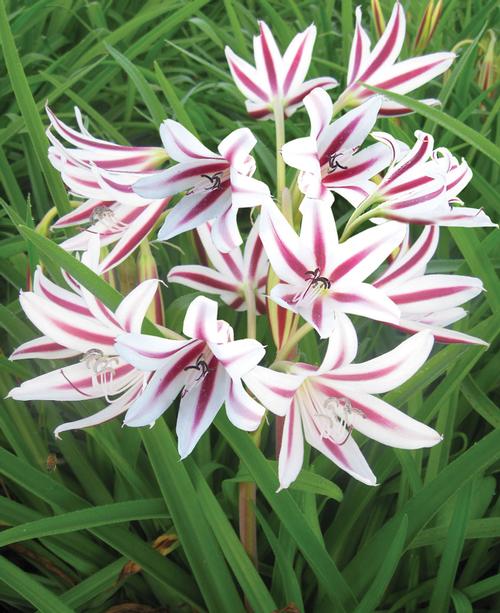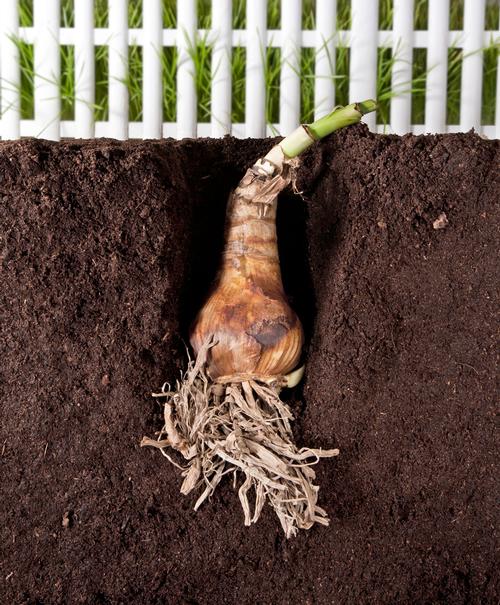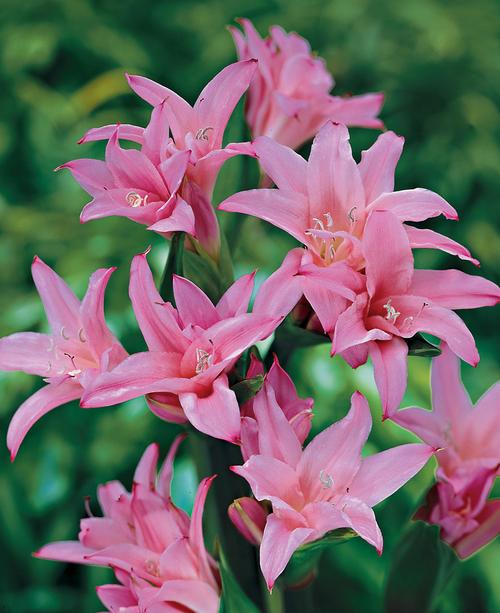ALL ABOUT CRINUMS
Crinums are tough, long-lived plants with strappy leaves and fragrant, funnel-shaped flowers. In areas where the bulbs are hardy (zones 7-10) the plants can grow quite large, reaching as much as 4 feet across. Crinums are often found growing in cemeteries and abandoned home sites. Similar to lilacs, they will flower for generations with little or no attention.

What to Know about Crinums
Crinums, or crinum lilies, are related to amaryllis. The bulbs have thick, fleshy roots and once planted, they do not like to be disturbed. Plan ahead and give your crinums a spot where they can stay for many years.
Over time, the bulbs will enlarge and multiply. On well established plants, bulbs can weigh as much as twenty pounds and it can be almost impossible to remove them from the soil.
Crinums may bloom in the spring, summer or winter. Individual flowers last for only a day, but a stalk contains many buds and will bloom for weeks. Don’t expect any flowers the first summer after planting. It will take at least one full growing season for the new bulbs to establish roots and form buds for the second year.

How to Plant Crinums
An ideal planting location is sunny, warm and somewhat sheltered from wind. The soil should be well drained and never saturated.
Plant the bulbs 12-24” apart. Dig a hole for each bulb that's about 10" deep. Bury the bulb up to the place where the stem emerges from the "neck" of the bulb (see the photo at left). The stem should be above the ground and the neck should be under the soil.
In areas where crinums are not hardy (zones 3-6), they may be grown in pots. You can display the pots outdoors in summer and bring them indoors for the winter. Choose a large container to minimize watering chores. The pot should also be strong enough to resist the pressure of the roots as they expand and press against the sides of the container.

How to Care for Crinums
In areas where crinums are hardy, the plants usually retain their foliage all year round. Newly planted bulbs and bulbs that are grown in pots, may go dormant during the winter months. If this happens, the leaves will yellow and die back in the fall. Simply let the bulbs rest, keeping the soil barely moist. New growth will appear again in the spring
During the first summer, water as needed to keep the soil around the bulbs lightly moist. Once crinums are well established they are relatively drought tolerant, though the plants grow best with consistent moisture. Potted crinums need to be watered frequently to keep the soil consistently moist.
Crinums flower best when they are fed twice a year with a balanced fertilizer. If the foliage gets tattered looking, it can be pruned as needed. Just remember that removing lots of leaves may reduce the plant’s vigor and flower production.


